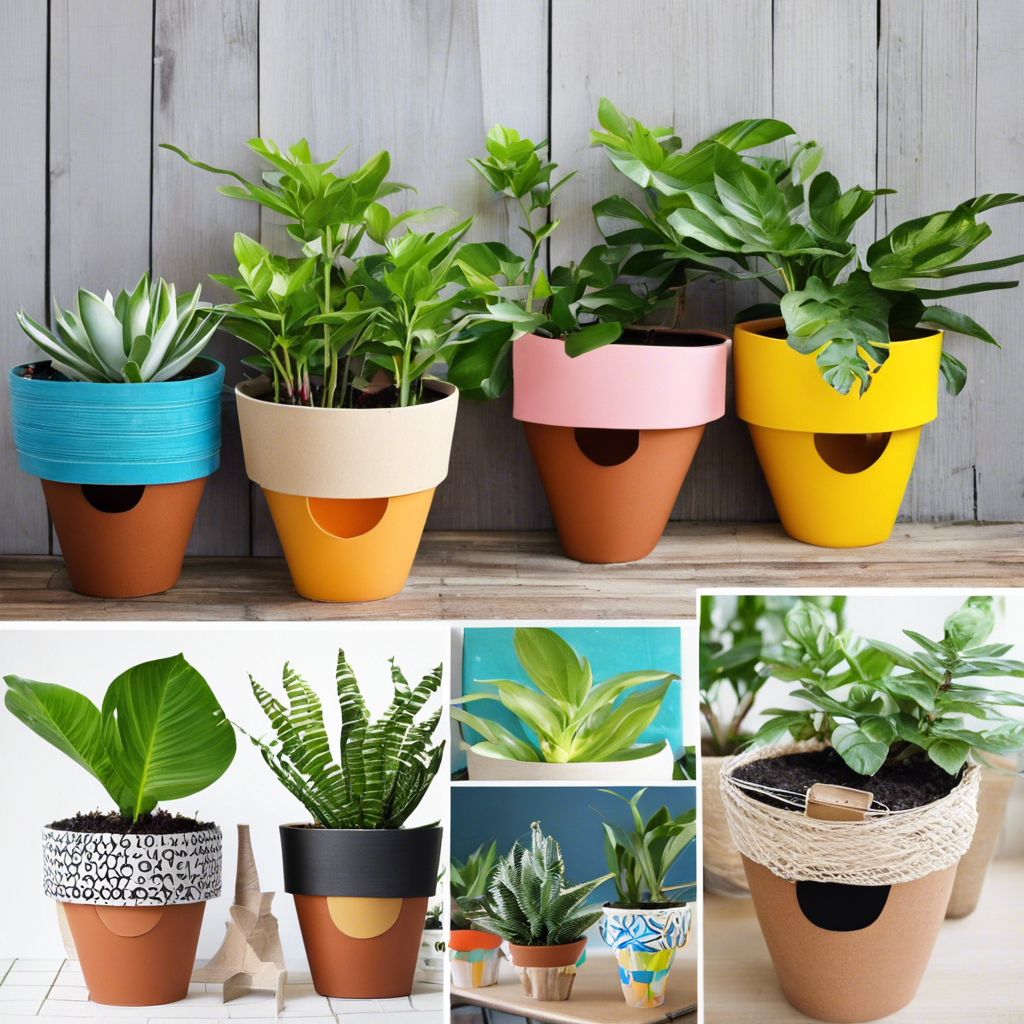Transforming recycled materials into vibrant plant pots is an innovative and eco-friendly trend that’s taking the gardening world by storm. With a surge in environmental consciousness, many are seeking ways to reduce waste and nurture their green thumbs simultaneously. This creative approach to gardening offers a unique and sustainable twist to traditional horticulture, allowing individuals to craft distinctive and personalized habitats for their beloved plants.
The beauty of this trend lies in its versatility and the opportunity it presents to repurpose items destined for landfills. It encourages creativity and resourcefulness, inviting individuals to view everyday objects through a new lens. Containers that once held food, drinks, or household products can find new life as stylish and functional planters, adding a touch of individuality to any indoor or outdoor space. It’s a fun and rewarding way to combine a love for plants with a commitment to environmental stewardship.
Social media platforms and online communities have played a pivotal role in popularizing DIY plant pots made from recycled materials. Gardeners and enthusiasts alike share their unique creations, inspiring others to embark on similar ventures. A simple scroll through Instagram or Pinterest reveals a plethora of aesthetically pleasing and innovative planter ideas, from colorful plastic bottle planters to chic concrete pots crafted from recycled materials. These online platforms have become digital gardens, fostering a sense of community and providing a space to exchange tips, tricks, and success stories.
The process of creating DIY plant pots is not only enjoyable but also empowers individuals to take control of their environmental impact. It begins with collecting suitable recycled materials, such as plastic bottles, cans, or glass jars, and transforming them into planters with a few simple tools and a bit of creativity. The design possibilities are endless, from painting and decorating the pots to crafting self-watering systems for improved plant care. Every step of the way, individuals can tailor their creations to match their personal style and the needs of their plants.
Another appealing aspect of this trend is the cost-effectiveness it offers. By utilizing items typically discarded, individuals can create an array of plant pots without breaking the bank. This accessibility removes any financial barriers, making the joy of gardening and plant parenting available to all. It also encourages a sense of resourcefulness, urging individuals to view waste differently and consider the potential hidden within everyday items.
The environmental benefits of embracing recycled materials for plant pots are profound. It directly contributes to reducing landfill waste, giving new life to discarded items, and promoting a circular economy. Plastic waste, in particular, has been a growing concern, with single-use plastic bottles contributing significantly to pollution. By repurposing plastic bottles into plant pots, individuals not only decrease the demand for new plastic products but also actively divert waste from landfills and our natural environment.
In addition to its environmental and economic advantages, this trend fosters a sense of community and connection. It brings people together, whether through online platforms or local gardening clubs, to share ideas, offer advice, and showcase their unique creations. Gardening has long been associated with therapeutic benefits, and the act of creating and nurturing life can be a calming and fulfilling experience. By combining recycling with gardening, individuals not only benefit from spending time in nature but also contribute to a more sustainable future.
The appeal of DIY plant pots using recycled materials transcends aesthetics; it’s a movement that empowers individuals to make a positive impact on their surroundings. It encourages a mindful approach to consumption, inspiring people to reconsider, reduce, and reuse. As environmental awareness continues to grow, this trend is likely to gain even more momentum, with individuals embracing sustainability in their gardens and homes. It empowers people to take action, no matter how small, and demonstrates that collective efforts can lead to significant change.
The possibilities for creating DIY plant pots are limited only by one’s imagination. Online resources and step-by-step guides are readily available, making it accessible to beginners and experienced crafters alike. Whether adorning a balcony with colorful plastic bottle planters or crafting a sleek concrete planter for an indoor oasis, individuals can find satisfaction in knowing they are contributing to a greener world. It’s a trend that seamlessly blends functionality, sustainability, and individual expression, inspiring a new generation of environmentally conscious gardeners.
So, for those seeking to embrace their creative side and nurture their love for plants, DIY plant pots using recycled materials is the way to go. It’s a chance to embark on a rewarding journey, where every planter crafted tells a unique story of sustainability and personal style. With environmental consciousness on the rise, this trend is certainly one to watch, offering a fun and innovative approach to eco-friendly living that anyone can embrace. Get ready to roll up your sleeves, unleash your creativity, and join a global community of gardeners embracing sustainability, one recycled plant pot at a time!
I hope that was helpful! Please let me know if there is anything else you would like me to address in this article.
